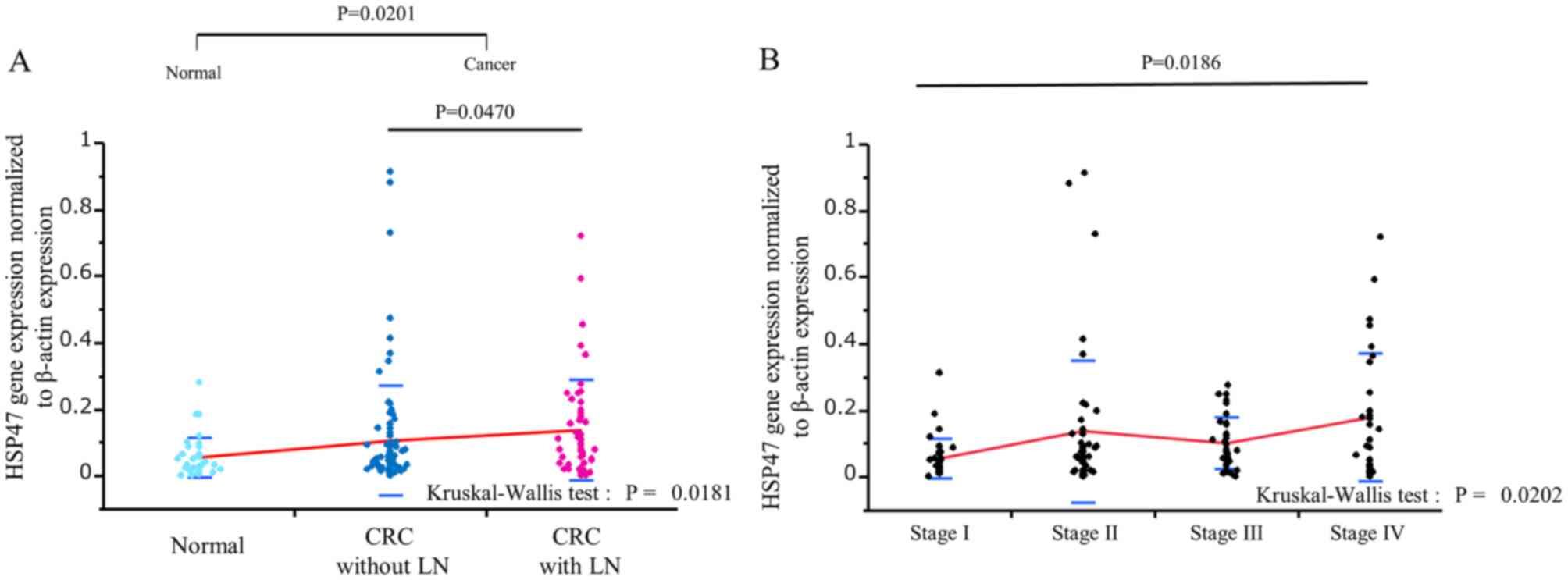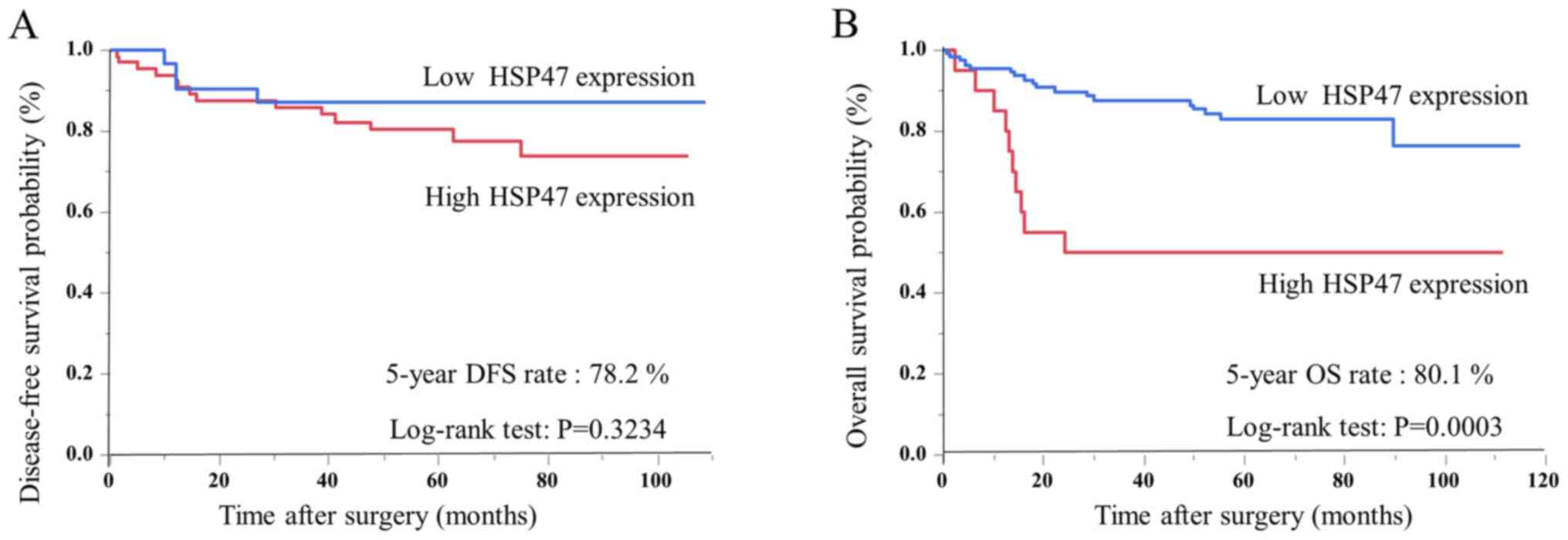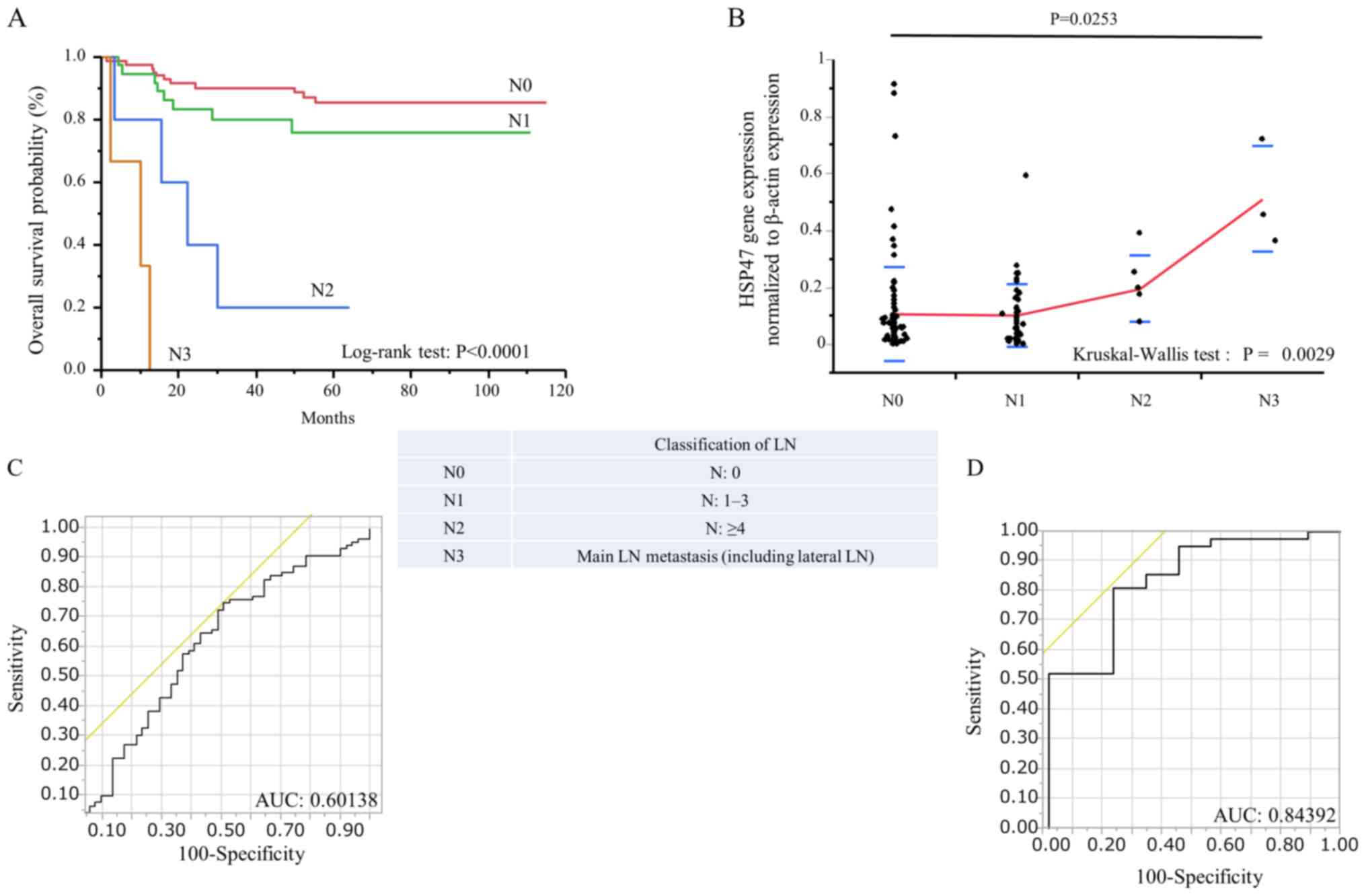|
1
|
Jemal A, Bray F, Center MM, Ferlay J, Ward
E and Forman D: Global cancer statistics. CA Cancer J Clin.
61:69–90. 2011. View Article : Google Scholar : PubMed/NCBI
|
|
2
|
Edge S, Compton C, Fritz A, Greene F and
Trotti A: AJCC Cancer Staging Manual. 7th. Springer; New York, NY:
pp. 237–46. 2010
|
|
3
|
Chau I and Cunningham D: Adjuvant therapy
in colon cancer: Current status and future directions. Cancer Treat
Rev. 28:223–236. 2002. View Article : Google Scholar : PubMed/NCBI
|
|
4
|
Schrag D, Gelfand SE, Bach PB, Guillem J,
Minsky BD and Begg CB: Who gets adjuvant treatment for stage II and
III rectal cancer? Insight from surveillance, epidemiology, and end
results-Medicare. J Clin Oncol. 19:3712–3718. 2001. View Article : Google Scholar : PubMed/NCBI
|
|
5
|
Siegel R, Naishadham D and Jemal A: Cancer
statistics, 2012. CA Cancer J Clin. 62:10–29. 2012. View Article : Google Scholar : PubMed/NCBI
|
|
6
|
Kwak JY, Kim JS, Kim HJ, Ha HK, Yu CS and
Kim JC: Diagnostic value of FDG-PET/CT for lymph node metastasis of
colorectal cancer. World J Surg. 36:1898–1905. 2012. View Article : Google Scholar : PubMed/NCBI
|
|
7
|
Low G, Tho LM, Leen E, Wiebe E, Kakumanu
S, McDonald AC and Poon FW: The role of imaging in the
pre-operative staging and post-operative follow-up of rectal
cancer. Surgeon. 6:222–231. 2008. View Article : Google Scholar : PubMed/NCBI
|
|
8
|
Imaoka H, Toiyama Y, Saigusa S, Kawamura
M, Kawamoto A, Okugawa Y, Hiro J, Tanaka K, Inoue Y, Mohri Y and
Kusunoki M: RacGAP1 expression, increasing tumor malignant
potential, as a predictive biomarker for lymph node metastasis and
poor prognosis in colorectal cancer. Carcinogenesis. 36:346–354.
2015. View Article : Google Scholar : PubMed/NCBI
|
|
9
|
Imaoka H, Toiyama Y, Fujikawa H, Hiro J,
Saigusa S, Tanaka K, Inoue Y, Mohri Y, Mori T, Kato T, et al:
Circulating microRNA-1290 as a novel diagnostic and prognostic
biomarker in human colorectal cancer. Ann Oncol. 27:1879–1886.
2016. View Article : Google Scholar : PubMed/NCBI
|
|
10
|
Lina O, Marie-Louise H, Anne I, Gudrun L
and Sten H: Allocating colorectal cancer patients to different risk
categories by using a five-biomarker mRNA combination in lymph node
analysis. PLoS One. 15:e02290072020. View Article : Google Scholar : PubMed/NCBI
|
|
11
|
Li H, Ma SQ, Huang J, Chen XP and Zhou HH:
Roles of long noncoding RNAs in colorectal cancer metastasis.
Oncotarget. 8:39859–39876. 2017. View Article : Google Scholar : PubMed/NCBI
|
|
12
|
Mori K, Toiyama Y, Otake K, Fujikawa H,
Saigusa S, Hiro J, Kobayashi M, Ohi M, Tanaka K, Inoue Y, et al:
Proteomics analysis of differential protein expression identifies
heat shock protein 47 as a predictive marker for lymph node
metastasis in patients with colorectal cancer. Int J Cancer.
140:1425–1435. 2017. View Article : Google Scholar : PubMed/NCBI
|
|
13
|
Livak KJ and Schmittgen TD: Analysis of
relative gene expression data using real-time quantitative PCR and
the 2(-Delta Delta C(T)) method. Methods. 25:402–408. 2001.
View Article : Google Scholar : PubMed/NCBI
|
|
14
|
Japanese Society for Cancer of the Colon
and Rectum General Rules for Clinical and Pathological Studies on
Cancer of the Colon RaARV. (7th). (in Japanese). (Tokyo). 36–37.
2009.
|
|
15
|
Nagata K, Saga S and Yamada KM: A major
collagen-binding protein of chick embryo fibroblasts is a novel
heat shock protein. J Cell Biol. 103:223–229. 1986. View Article : Google Scholar : PubMed/NCBI
|
|
16
|
Kurkinen M, Taylor A, Garrels JI and Hogan
BL: Cell surface-associated proteins which bind native type IV
collagen or gelatin. J Biol Chem. 259:5915–5922. 1984.PubMed/NCBI
|
|
17
|
Schlesinger MJ: Heat shock proteins. J
Biol Chem. 265:12111–12114. 1990.PubMed/NCBI
|
|
18
|
Satoh M, Hirayoshi K, Yokota S, Hosokawa N
and Nagata K: Intracellular interaction of collagen-specific stress
protein HSP47 with newly synthesized procollagen. J Cell Biol.
133:469–483. 1996. View Article : Google Scholar : PubMed/NCBI
|
|
19
|
Nakai A, Satoh M, Hirayoshi K and Nagata
K: Involvement of the stress protein HSP47 in procollagen
processing in the endoplasmic reticulum. J Cell Biol. 117:903–914.
1992. View Article : Google Scholar : PubMed/NCBI
|
|
20
|
Kawada N, Kuroki T, Kobayashi K, Inoue M,
Nakatani K, Kaneda K and Nagata K: Expression of heat-shock protein
47 in mouse liver. Cell Tissue Res. 284:341–346. 1996. View Article : Google Scholar : PubMed/NCBI
|
|
21
|
Razzaque MS, Nazneen A and Taguchi T:
Immunolocalization of collagen and collagen-binding heat shock
protein 47 in fibrotic lung diseases. Mod Pathol. 11:1183–1188.
1998.PubMed/NCBI
|
|
22
|
Razzaque MS, Kumatori A, Harada T and
Taguchi T: Coexpression of collagens and collagen-binding heat
shock protein 47 in human diabetic nephropathy and IgA nephropathy.
Nephron. 80:434–443. 1998. View Article : Google Scholar : PubMed/NCBI
|
|
23
|
Kuroda K, Tsukifuji R and Shinkai H:
Increased expression of heat-shock protein 47 is associated with
overproduction of type I procollagen in systemic sclerosis skin
fibroblasts. J Invest Dermatol. 111:1023–1028. 1998. View Article : Google Scholar : PubMed/NCBI
|
|
24
|
Naitoh M, Hosokawa N, Kubota H, Tanaka T,
Shirane H, Sawada M, Nishimura Y and Nagata K: Upregulation of
HSP47 and collagen type III in the dermal fibrotic disease, keloid.
Biochem Biophys Res Commun. 280:1316–1322. 2001. View Article : Google Scholar : PubMed/NCBI
|
|
25
|
Sauk JJ, Nikitakis N and Siavash H: Hsp47
a novel collagen binding serpin chaperone, autoantigen and
therapeutic target. Front Biosci. 10:107–118. 2005. View Article : Google Scholar : PubMed/NCBI
|
|
26
|
Morino M, Tsuzuki T, Iijima H, Shirakami
T, Kiyosuke YI, Ishikawa Y, Yoshimura M and Yoshikumi C: Marked
induction of HSP47, a collagen-binding stress protein, during solid
tumor formation of ascitic Sarcoma 180 in vivo. In Vivo. 9:503–508.
1995.PubMed/NCBI
|
|
27
|
Lee HW, Kwon J, Kang MC, Noh MK, Koh JS,
Kim JH and Park JH: Overexpression of HSP47 in esophageal squamous
cell carcinoma: Clinical implications and functional analysis. Dis
Esophagus. 29:848–855. 2016. View Article : Google Scholar : PubMed/NCBI
|
|
28
|
Araki K, Mikami T, Yoshida T, Kikuchi M,
Sato Y, Oh-ishi M, Kodera Y, Maeda T and Okayasu I: High expression
of HSP47 in ulcerative colitis-associated carcinomas: Proteomic
approach. Br J Cancer. 101:492–497. 2009. View Article : Google Scholar : PubMed/NCBI
|
|
29
|
Maitra A, Iacobuzio-Donahue C, Rahman A,
Sohn TA, Argani P, Meyer R, Yeo CJ, Cameron JL, Goggins M, Kern SE,
et al: Immunohistochemical validation of a novel epithelial and a
novel stromal marker of pancreatic ductal adenocarcinoma identified
by global expression microarrays: Sea urchin fascin homolog and
heat shock protein 47. Am J Clin Pathol. 118:52–59. 2002.
View Article : Google Scholar : PubMed/NCBI
|
|
30
|
Yamamoto N, Kinoshita T, Nohata N, Yoshino
H, Itesako T, Fujimura L, Mitsuhashi A, Usui H, Enokida H, Nakagawa
M, et al: Tumor-suppressive microRNA-29a inhibits cancer cell
migration and invasion via targeting HSP47 in cervical squamous
cell carcinoma. Int J Oncol. 43:1855–1863. 2013. View Article : Google Scholar : PubMed/NCBI
|
|
31
|
Morino M, Tsuzuki T, Ishikawa Y, Shirakami
T, Yoshimura M, Kiyosuke Y, Matsunaga K, Yoshikumi C and Saijo N:
Specific expression of HSP47 in human tumor cell lines in vitro. In
Vivo. 11:17–21. 1997.PubMed/NCBI
|
|
32
|
Krishnamurthi SS, Seo Y and Kinsella TJ:
Adjuvant therapy for rectal cancer. Clin Colon Rectal Surg.
20:167–181. 2007. View Article : Google Scholar : PubMed/NCBI
|
|
33
|
Greene FL PD, Fleming I and Fritz A: AJCC
Cancer Staging Manual. 6th. Springer-Verlag; Berlin: 2002,
View Article : Google Scholar
|

















